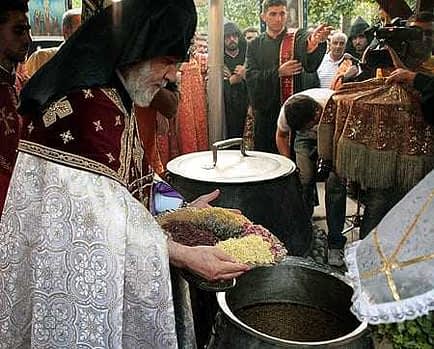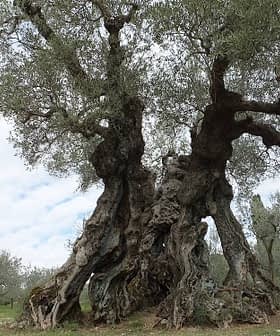
Photo: Armenian Church
When God spoke to Moses on Mt. Sinai, he said: “Take the finest spices of liquid myrrh …and of sweet-smelling cinnamon … and of aromatic cane … and of cassia … and of olive oil … and you shall make of these a sacred anointing oil blended as by the perfumer … this shall be my holy anointing oil throughout your generations.” (Exodus 30:22 – 33).
And thus commanded, every seven years since AD 301 Armenian priests from all over the world descend upon one of the oldest cathedrals in existence — the ancient Cathedral of Etchmiadzin in Armenia. It was here, that St. Gregory, patron saint of the Armenians blended the first sample of Muron ‘as a unifying religious symbol of forgiveness and peace, and as a medicine for healing’ and it is here that the priests’ fulfill their mission: to return to their respective dioceses with their precious cargo of freshly concocted Muron — the sweet-scented holy oil.
The recipe is prepared in a massive, ornately-engraved, silver caldron; and is created from more than 40 different ingredients: herbs, flower extracts, spices, wine and the main component — pure virgin olive oil. To protect the sweet perfume, the lid of the cauldron is sealed with uncooked dough, and the entire assemblage steamed for three days and three nights. The Bishops use three holy relics to sanctify the oil: the Geghart — the lance that pierced the side of Christ; a piece of wood believed to be from the original Cross upon which Christ gave his life; and the holy right hand of St. Gregory the Illuminator.
Accompanied by readings of sacred scripts and the ringing of bells to symbolize the descent of the Holy Spirit, the caldron is unsealed and the Holy Chrism from the previous ceremony is added — old to new — mixed with the original batch from the Armenian Church’s founding 1,711 years ago. It represents the continuation of an unbroken chain from the time of St. Gregory – and an extraordinary link between millennia.
Over the next seven years, the Muron will be used sparingly in Armenian churches, scattered like their people over the globe. Church leaders note, that throughout the centuries ‘Muron has helped sustain a people decimated and dispersed by war, conquest and genocide.’



